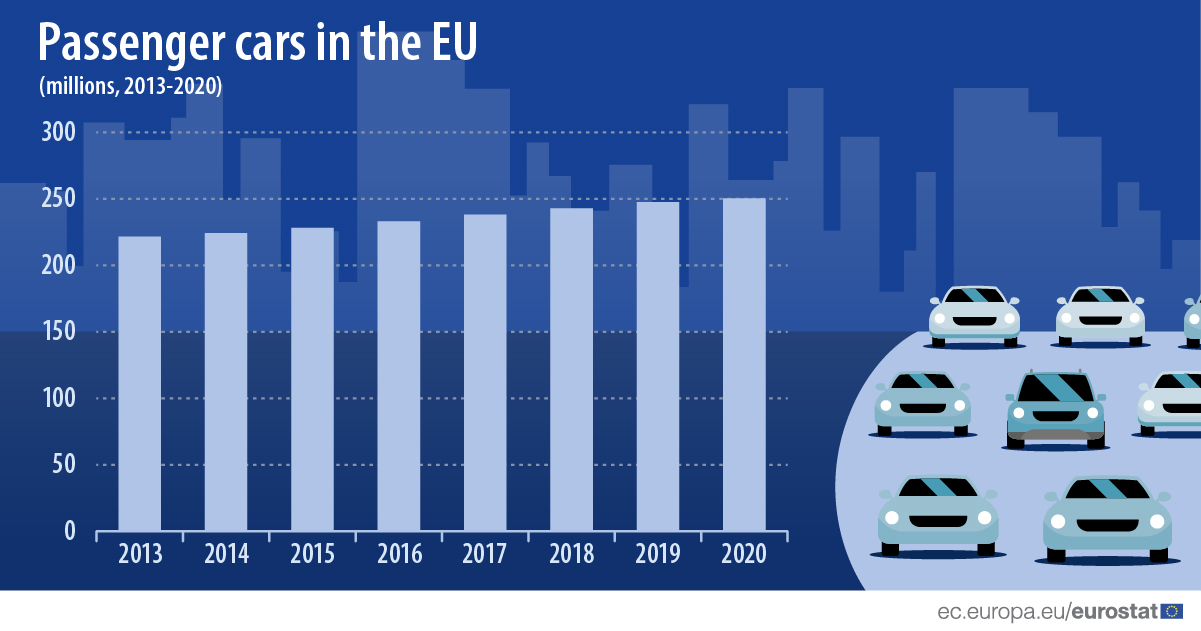In 2020, the number of battery-only electric passenger cars in the EU Member States exceeded 1 million for the first time. This is 20 times more than the number recorded in 2013 and 3 times more than the number recorded in 2018.
This information comes from data on passenger cars published by Eurostat today. The article presents a handful of findings from the more detailed Statistics Explained article.
Source dataset: road_eqs_carpda
The highest rates of increase in battery-only electric passenger cars were noted between 2019 and 2020 (+83%) and between 2018 and 2019 (+64%). In 2020, their share in the total number of passenger cars grew from 0.02% to 0.4%.
Overall, the passenger car fleet in almost all of the EU Member States has grown over the last five years, reaching a total of 250 million cars in 2020.
Source dataset: road_eqs_carpda
For at least 30 years, Luxembourg has recorded the highest motorisation rate (number of cars per thousand inhabitants) among the EU Member States (682 passenger cars per thousand inhabitants in 2020). This might be influenced by cross-border workers (i.e. not inhabitants) using company cars registered in the country. Luxembourg was followed by Italy (670), Poland (664) and Finland (652).
At the other end of the scale, a particularly low motorisation rate was recorded in Romania (379 cars per thousand inhabitants), despite a growth in the number of registered cars over the period 2015-2020 (+41%). Romania was followed by Latvia (390), Hungary (403) and Bulgaria (414).
For more information:
- Statistics Explained article on passenger cars in the EU
- Statistics Explained article on transport equipment
- Dedicated section on transport
- Database on transport (see road transport equipment under road transport)
To contact us, please visit our User Support page.
For press queries, please contact our Media Support.



